Microgreens are not only a green eye-catcher on the windowsill, they are also used in the kitchen. In addition, many plant species can be cultivated as microgreens.

The superfood from America - microgreens are wonderful for garden catchers, but can also spice up the dishes of garden professionals. The advantages of the small plants are, for example, their low investment costs and the little time required. However, it is important to mention that microgreens do not replace a balanced diet, but can be seen as a healthy addition. We will show you which herbs and vegetables are suitable for cultivation and how they can be used in the kitchen.
Contents
- What are microgreens?
- Microgreens varieties: Which plants are suitable?
- How healthy are microgreens?
- use in the kitchen
What are microgreens?
The name says it all - the term "microgreens" means very young vegetable and herb plants that are suitable for consumption. So you don't use the fruit or the mature leafy green, but you harvest the small plants after 7 to 14 days. The
Cultivation of microgreens is easy to implement even for garden beginners and works on any bright window sill.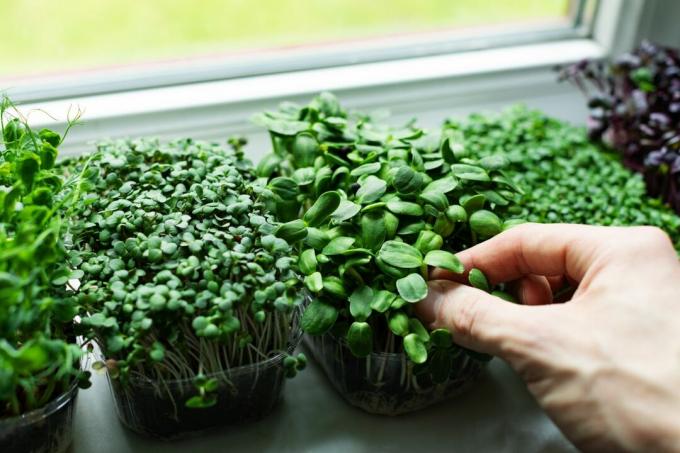
What is the difference between microgreens and sprouts? When seeds begin to germinate, they are commonly referred to as sprouts. The cotyledons are already visible at this stage, but are not yet fully developed. Microgreens, on the other hand, represent the older generation and already have pronounced cotyledons and some correct leaves. In contrast to sprouts, microgreens are cut off at the substrate surface - sprouts, on the other hand, are not cultivated in substrate and are used whole.
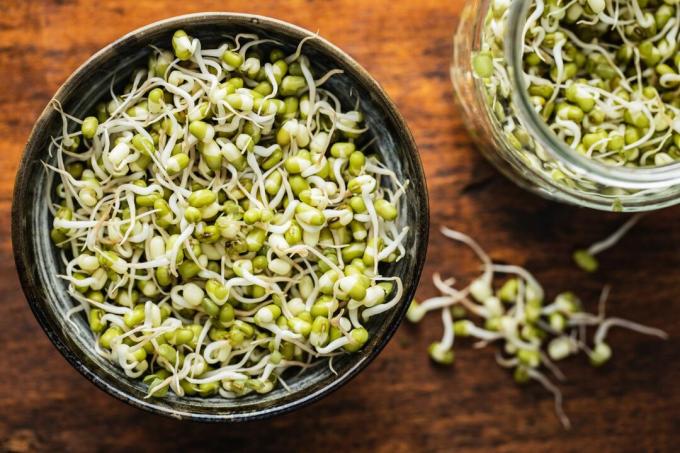
Microgreens varieties: Which plants are suitable?
In principle, all those useful plants and thus herbs and vegetables can be grown and consumed as microgreens, of which the leafy green is edible.
nightshade, like tomato (Solanum lycopersicum), aubergine (Solanum melongena) or Potato (Solanum tuberosum) are not suitable because they contain solanine in their leaf green and this substance is toxic to us humans.
Tip: Preferably use organic seeds for growing the microgreens. Conventional seeds are often treated with chemicals to extend their shelf life.

We are all familiar with what is probably the most well-known microgreen: the fast-growing one garden cress (Lepidium sativum). In addition to garden cress, there is a large selection of suitable plants - we have put together a few examples for you.
Herbs
- dock (Rumex)
- anise (Pimpinella anisum)
- basil (Ocimum basilicum)
- dill (Anethum graveolens)
- garden orchard (Atriplex hortensis)
- chervil (Anthriscus cerefolium)
- coriander (Coriandrum sativum)
- mint (mentha)
- Parsely (Petroselinum crispum)
- lemon balm (Melissa officinalis)
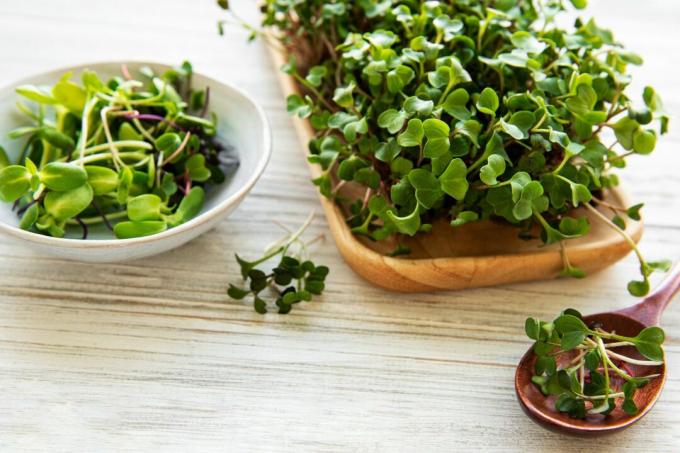
Vegetables:
- cauliflower (Brassica oleracea var. botrytis)
- broccoli (Brassica oleracea var. italiana)
- beans (Phaseolus vulgaris)
- Peas (Pisum sativum)
- strawberry spinach (Blithum virgatum)
- fennel (Foeniculum vulgare)
- spring onion (Allium fistulosum)
- carrot (Daucus carota subsp. sativus)
- chard (Beta vulgaris subsp. vulgaris)
- Pak choi (Brassica rapa subsp. chinensis)
- radish (Raphanus sativus var. sativus)
- Beetroot (Beta vulgaris)
- Red cabbage (Brassica oleracea convar. capitata var. rubra)
- arugula (Eruca sativa)
- celery (Apium graveolens var. dulce)
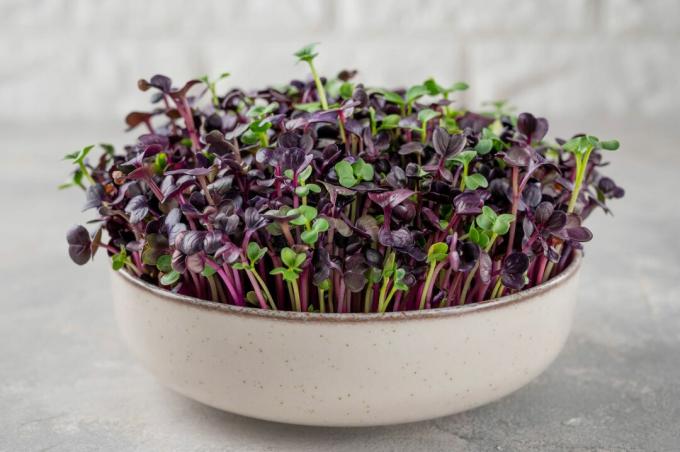
Miscellaneous:
- amaranth (Amaranthaceae)
- buckwheat (fagopyrum)
- Mustard (SinapisAlba)
- sunflower (Helianthus annuus)
- Wheat (triticum)
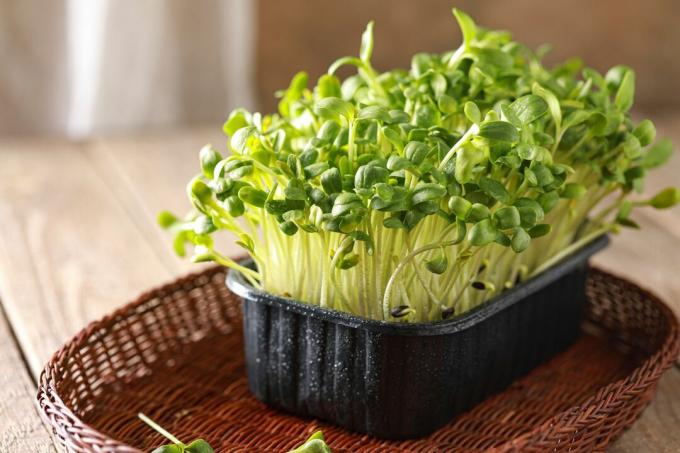
Not suitable as microgreens are:
- tomato (Solanum lycopersicum),
- Potato (Solanum tuberosum)
- aubergine (Solanum melongena)
- paprika (capsicum)
How healthy are microgreens?
Basically, herbs and especially vegetables are healthy, which is why the German Society for Nutrition clearly recommends their consumption. The size doesn't really matter in the first place. In fact, a higher density of phytochemicals, nutrients and vitamins has been found in microgreens compared to adult plants. However, in order to be able to feel a health benefit, a certain amount of microgreens must be consumed. Since these are very flavorful, they are often only used as decoration or as a spice. Apart from that, the microgreens also lack the high fiber content, which is particularly valuable for our digestion.
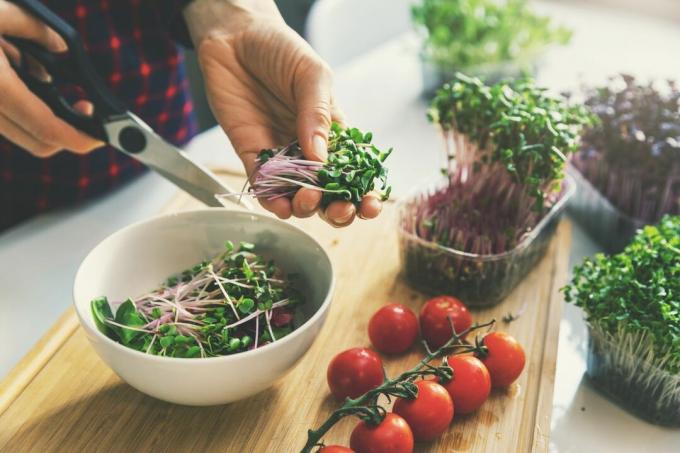
Conclusion: This trend, which originated in America, is often referred to as a superfood and is definitely healthy, but one should not hope for a miracle effect. Also, one must remember that it is a wasteful luxury to only grow the tiny seedlings with low saturation levels consume, if the same seed could also become a whole plant, which in total would have significantly more nutritional value for us offers.
use in the kitchen
You get the highest levels of the healthy substances in microgreens when they are eaten raw. However, microgreens are less suitable as a stand-alone raw food because they are very flavorful. Upscale gastronomy, for example, therefore uses microgreens to decorate salads or soups. The young plants also taste wonderful on bread with butter or spreads or as an additive for herbal quark or cream cheese variations. They can also be added to smoothies as a flavor supplement.
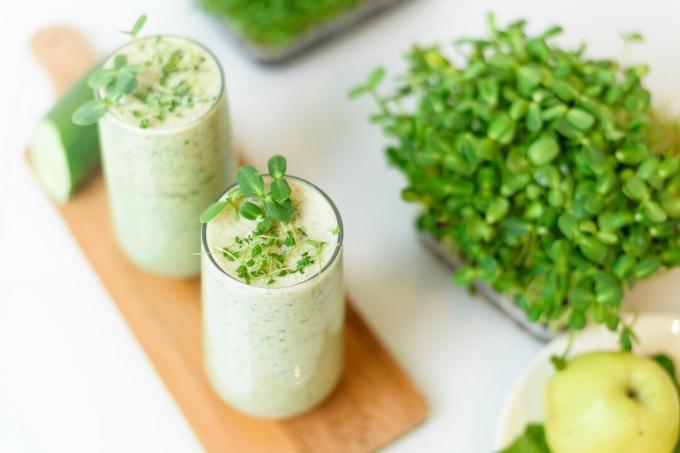
If the microgreens are ready to be harvested, they should be processed quickly, as they quickly begin to rot. Unfortunately, microgreens are also not well suited for freezing and, in addition to their crunchy texture, they also lose some of their healthy ingredients.
A notice: Mold could form when growing microgreens as a certain level of moisture is important. If you spot mold on your microgreen culture, you should compost it directly and never eat it.
fenugreek (Trigonella foenum-graecum) can also be cultivated as a microgreen and has a wide range of positive effects on health. In addition to being consumed raw, the plant can also be prepared as a tea or used as an oil.
Register now for our Plantura garden post, secure a 10% welcome discount for our online shop and Weekly great tips, seasonal trends and inspiration for all things gardening from our expert receive.
